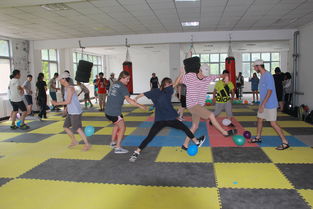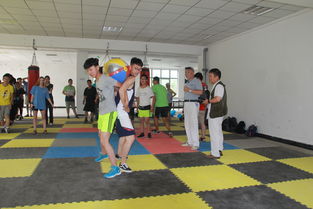
财源滚滚安卓版

- 文件大小:98.3MB
- 界面语言:简体中文
- 文件类型:Android
- 授权方式:5G系统之家
- 软件类型:主题下载
- 发布时间:2024-10-09
- 运行环境:5G系统之家
- 下载次数:224
- 软件等级:
- 安全检测: 360安全卫士 360杀毒 电脑管家
系统简介
英语课上可以玩的游戏有很多种,以下是一些适合英语课堂的游戏:
1. 猜词游戏:学生分成小组,每个小组轮流出一个单词或短语,其他小组要猜出来。猜对的小组得分。
2. 快速问答:教师提出问题,学生快速回答。回答正确的学生得分。
3. 猜数字:学生猜测一个数字,教师给出提示,如“太大了”或“太小了”,学生根据提示调整猜测。
4. 猜词接龙:学生轮流说一个单词,下一个学生要说一个以刚刚说的单词最后一个字母开头的单词。
5. 猜人物:教师描述一个人物,学生猜出这个人物是谁。
6. 猜动物:教师描述一个动物,学生猜出这个动物是什么。
7. 猜地点:教师描述一个地点,学生猜出这个地点在哪里。
8. 猜颜色:教师描述一个颜色,学生猜出这个颜色是什么。
9. 猜时间:教师描述一个时间,学生猜出这个时间是什么时候。
10. 猜天气:教师描述一个天气,学生猜出这个天气是什么。
这些游戏可以帮助学生在轻松愉快的氛围中学习英语,提高他们的英语水平。
Introduction to English Classroom Games

Engaging students in the learning process is crucial for effective language education. One of the best ways to achieve this is by incorporating interactive games into English classes. These games not only make learning fun but also enhance students' language skills, such as vocabulary, grammar, and pronunciation. In this article, we will explore a variety of English classroom games that cater to different age groups and learning objectives.
1. Alphabet Relay Race

Tagged with AlphabetGames, this game is perfect for younger students or beginners. It helps them learn the alphabet in a fun and interactive way. Here's how to play:
Prepare two sets of 20 letter cards (both uppercase and lowercase) and place them on the blackboard in a scrambled order.
Divide the class into two teams and have them stand in a line.
The first student from each team comes to the front and, using one hand, moves one letter card at a time to its correct position in the alphabet.
The team that completes the task first wins. Points can be deducted for incorrect placements or taking too long.
2. Quick Say Alphabet Challenge

Tagged with AlphabetChallenge, this game is a great way to practice alphabetical order and quick thinking. Here's the setup:
Divide the class into two teams.
When the game starts, the first student from each team must say the next letter in the alphabet after the teacher announces the starting letter.
Students who say the wrong letter or hesitate too long receive negative points.
The team with the fewest points at the end of the game wins.
3. Letter Line-Up

Tagged with LetterLineUp, this game is excellent for reinforcing letter recognition and order. Here's how to play:
Give each student a letter card.
When the teacher calls out a letter, students holding that letter and the following four letters should stand up and form a line.
This game can be played in pairs or as a group competition.
4. Big Letter, Little Letter Hunt

Tagged with LetterHunt, this game is a fun way to practice matching uppercase and lowercase letters. Here's the procedure:
Write a group of uppercase letters on the blackboard.
Choose a student to come to the board with a set of mixed-up lowercase letter cards.
The student must match the lowercase letters to the uppercase ones on the board as quickly as possible.
The team or student who completes the task first wins.
5. Musical Chairs with Letters

Tagged with MusicalChairs, this classic game can be adapted for English language learning. Here's how to play:
Divide the class into two teams and give each team 26 letter cards (both uppercase and lowercase).
Place five chairs in a circle in front of the class.
Students sit on the chairs and hold their letter cards.
When the music starts, students walk around the chairs while the music plays.
When the music stops, students must find a chair to sit on. If there are not enough chairs, the student without a chair is out.
The game continues until only one student remains.
6. Friendship Circle

Tagged with FriendshipCircle, this game is designed to practice simple greetings and self-introductions. Here's the method:
Students form two concentric circles, facing each other.
While music plays, students rotate in opposite directions.
When the music stops, students greet the person they are facing and introduce themselves.
The game can be repeated with a new song or after a set time limit.
7. Toss the Sack

Tagged with TossTheSack, this game is a great way to practice conversational phrases. Here's how to play:
Students sit in a circle or stand in a line.
The
常见问题
- 2025-05-14 ThemeSigner
- 2025-05-14 更爱疯狂战机
- 2025-05-14 橘子娱乐棋牌2024最新版
- 2025-05-14 耽美咖啡馆(耽美喫茶)游戏官方版安卓下载安装手机版
主题下载下载排行

其他人正在下载
- 我解题特牛
- 超次元空间手游
- 骑士狂潮
- 诡异车厢
- 魔笛MAGI 摩尔迦娜XP主题+Win7主题
- 轻音少女 秋山澪XP主题+Win7主题
- 海贼王 乌索普XP主题+Win7主题
- 学园默示录 毒岛冴子XP主题+Win7主题+Win8主题
- 太阳的后裔双宋CP唯美主题
- 的孙菲菲是大概的
系统教程排行
- 605次 1 安卓系统级应用开发,Android系统级应用开发入门与进阶指南
- 487次 2 安卓10系统数独,数独游戏与智能算法的完美融合
- 792次 3 安卓系统官方网,Android系统官方架构与核心功能深度解析
- 124次 4 安卓系统怎么录指纹,安卓系统指纹录入与生成技术详解
- 548次 5 安卓 系统 好玩的游戏,畅玩无限
- 740次 6 安卓系统推荐电脑配置,高效运行与流畅体验必备配置解析
- 105次 7 原生安卓系统文件删除,安全操作与风险防范
- 986次 8 进入原生安卓系统界面,沉浸式体验与功能解析
- 413次 9 安卓框架系统打不开,全面解析解决方法与常见故障排除
- 732次 10 max怎么安装安卓系统,轻松安装安卓系统教程






